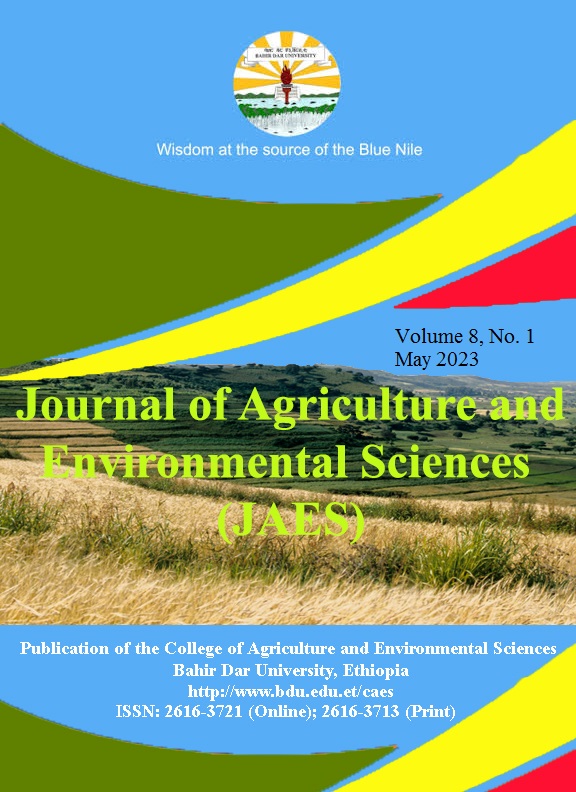Identification and characterization of honeybee flora in Jimma Zone, Ethiopia
Abstract
Due to the existence of diverse floral resources and favorable ecological conditions, Ethiopia is still one of the top ten natural honey producers worldwide. The study was conducted to identify and characterize the phenology and pollen potential of major bee forages in the various Agro-ecological conditions of Jimma zone. A total of 90 beekeepers were purposefully selected from three districts and interviewed using semi-structured questionnaire. The density and abundance of flowering plants were determined using sixty main quadrant sampling techniques. In addition, sixty-six pollen specimens were collected for one year using pollen traps at seven-day intervals and were also traced back to plant species level under a light microscope. The diversity of the bee flora was determined using the Shannon-Wiener diversity index. Based on survey, pollen load collection, and plant inventory data, the study has revealed the presence of 141 pollen and/or nectar-source honeybee plant species belonging to 62 families in the study area. Herbs were the most dominant bee flora growth forms, accounting for 62 (44%) of a total of 141 honeybee plant species, followed by trees at 48 (34%) and shrubs at 31 (22%), respectively. Herbaceous plant had a greater density value of plant species per plot than did trees and shrubs. The families with the highest number of species were Fabaceae 18 (12.8%), Asteraceae 11(7.8%), Poaceae 9(6.4%), Solanaceae 6 (4.3%), Acanthaceae 4 (2.8%), and Euphorbiaceae 4 (2.8%) in the study area. One hundred fifteen (81.6%) bee forage species were both sources of pollen and nectar, whereas fifteen (10.6%) were pollen sources and the remaining eleven (7.8%) were nectar source plant species. The Shannon diversity index and evenness were found to be 2.8 and 0.6, respectively. This indicated that the study area has a rich bee floral plant species and is suitable for beekeeping. The midland Agro-ecology relatively has the highest species diversity, richness and evenness compared to the highland and lowland Agro-ecologies. Two main flowering periods of honeybee plants were followed by two honey flow season. Therefore, beekeepers should follow floral calendar of honeybee plants to exploit the potential of the area for honey production.
Copyright (c) 2023 Journal of Agriculture and Environmental Sciences

This work is licensed under a Creative Commons Attribution-NonCommercial-NoDerivatives 4.0 International License.
Authors who publish with this journal agree to the following terms:
- Authors retain copyright and grant the journal right of first publication with the work simultaneously licensed under a Creative Commons Attribution License that allows others to share the work with an acknowledgement of the work's authorship and initial publication in this journal.
- Authors are able to enter into separate, additional contractual arrangements for the non-exclusive distribution of the journal's published version of the work (e.g., post it to an institutional repository or publish it in a book), with an acknowledgement of its initial publication in this journal.
Authors are permitted and encouraged to post their work online (e.g., in institutional repositories or on their website) prior to and during the submission process, as it can lead to productive exchanges, as well as earlier and greater citation of published work (See The Effect of Open Access).


